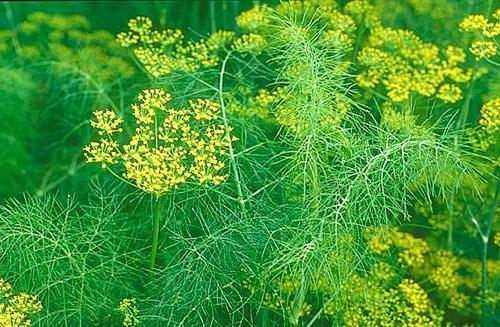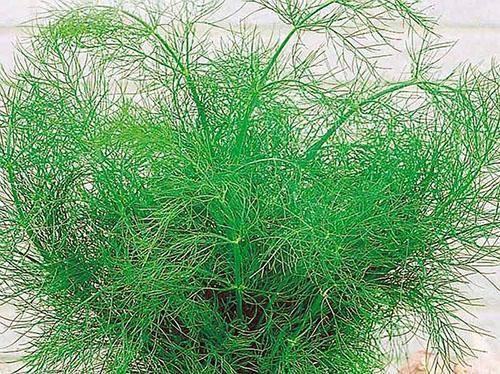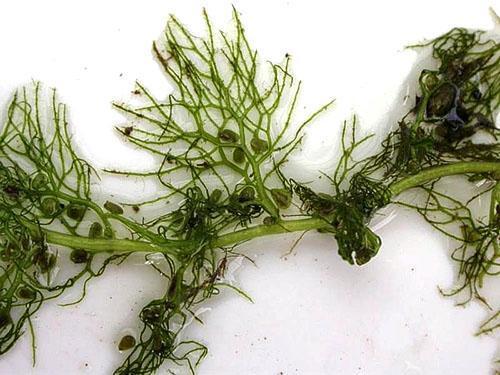Let's find out why dill turns yellow and what to do to save the harvest
 It is unlikely that there is at least one gardener who has not allotted a little space for spicy and flavoring crops. Dill refers precisely to such plants, without which a salad is not a salad. It is unpleasant for the owners to observe that the culture seems to grow with a weed among the neighbors, but on its own garden it barely breathes, and then completely dries up. Why dill turns yellow and what to do with this capricious plant, the owners cannot understand.
It is unlikely that there is at least one gardener who has not allotted a little space for spicy and flavoring crops. Dill refers precisely to such plants, without which a salad is not a salad. It is unpleasant for the owners to observe that the culture seems to grow with a weed among the neighbors, but on its own garden it barely breathes, and then completely dries up. Why dill turns yellow and what to do with this capricious plant, the owners cannot understand.
Dill needs

If the land with a good humus content is loose, then the dill agrees to divide the area even with potatoes, after being the first to spread over the area by self-seeding. Usually, early ripening varieties that have little greenery grow in this way, but the umbrella blooms early, when the caraway moth has not yet moved to the garden umbrella. The seeds have time to ripen; during the autumn tillage, some of them remain on the surface and emerge in the spring.
The Greeks and Romans equated the scent of dill with the scent of roses. He was sung in verse. The dill wreath was awarded to the winners, and it was equal to the laurel crown of sports prowess.
Dill does not like dense acidic soil, and does not tolerate alkaline soil. therefore ash feeding are not needed for him. And we all got used to sprinkle with ashes. If the garden was limed, then there will be no dill for potatoes, it will die. And all because our grass is demanding for acidity, we need a neutral soil of about 7 - 6.5 according to litmus test.
How to grow healthy dill
 All conditions have been created for dill in the garden, but does not want to develop, is sick. Why does dill turn yellow in the garden, how to please the stubborn, how to get beautiful greens and healing seeds? First you need to determine:
All conditions have been created for dill in the garden, but does not want to develop, is sick. Why does dill turn yellow in the garden, how to please the stubborn, how to get beautiful greens and healing seeds? First you need to determine:
- acidity of the soil;
- humus content;
- soil moisture content;
- plant density:
- colonization by pests.
In order to determine acidity, you need to buy indicator paper or a device from a garden store. It's easier with paper. Dig a hole, take a lump of damp earth at a depth of 10 cm, put a strip of paper there, squeeze it firmly and hold for a while so that the strip gets wet. Then immediately compare the color of the paper with a control scale. If a biting midge grows violently in the garden, and so it is clear that the earth is sour. Then you need to choose another sowing site, and dig up the site with the addition of ash, dolomite flour, lime dust.
The more humus, the more beautiful the dill. But this applies to rotted manure. Watering with fresh water is not recommended. The dill will begin to grow rapidly, and the fragile skeleton will not hold the fluffy branches, it will tumble down and carry away the neighbors. And for the owners in such a plant, odorless and tasteless, poison from nitrites is prepared. Dill collects the excess of this element in its openwork leaves. Moreover, he loves the tender leaves of aphids overfed with nitrogen, will instantly settle. Therefore, everything is good in moderation.
Scientists have studied the structure of the dill stem. Interest was aroused how the thin stem holds the umbrella even in strong winds. The structure of the fibers and the way they support each other is perfect. If such a structure is applied in construction, then buildings of any height could be built.
Dill turns yellow, what should I do? And the immoderate begins watering plants. But the dill will endure dry soil, it will only turn yellow, it will collect its carved foliage to retain water, but at least it will release an arrow with a flower basket. And pouring dill, and even cold water, is to give him the opportunity to die. Root rot will appear, the dill will turn yellow, and the dill will turn red and dry. Watering should be moderate and only with warm water.
 There were a lot of seeds, they threw them without regret. And so many plants have sprung up that they stand like a hat, pleasing to the eye. If you do not remove excess seedlings this week, do not leave the plants after 2 cm, the first leaves may come out, the second will be yellow. And restoring natural growth after stress is not easy for dill.
There were a lot of seeds, they threw them without regret. And so many plants have sprung up that they stand like a hat, pleasing to the eye. If you do not remove excess seedlings this week, do not leave the plants after 2 cm, the first leaves may come out, the second will be yellow. And restoring natural growth after stress is not easy for dill.
Here and there is still trouble. Weakened plants will surely be inhabited by aphids. Sometimes this happens right during germination, and then instead of dill trees there are sticks with a green cone at the top. Soon the sprout will turn yellow, the dill will die.
 It causes confusion when dill turns red. What to do in this case requires analysis. And again, the culprit will be acidic soil, in which phosphorus from the form available to the plant passes into insoluble. Then the root system does not receive nutrition and the plant starves.
It causes confusion when dill turns red. What to do in this case requires analysis. And again, the culprit will be acidic soil, in which phosphorus from the form available to the plant passes into insoluble. Then the root system does not receive nutrition and the plant starves.
 There are times when dill turns red and yellow. Why this is happening can be determined by looking closely at the plant:
There are times when dill turns red and yellow. Why this is happening can be determined by looking closely at the plant:
- Viral disease wilt begins with yellowing of the lower leaves, followed by verticillary wilting of the entire plant. Destroy the entire bush immediately.
- The leaves curl, turn yellow, turn red, you need to look for aphids not only on the leaves, but also at the root.
- A wet spot appeared at the very base. Wet root rot is associated with improper watering, spores transmitted with the seeds of the plant.
How to fix problems
 In order for greens to please with their healthy appearance, one should be able to fight for its health. If it turns out that the soil under the dill is acidic, you need to do fertilizing more often, insisting on compost and pouring it with slurry. In this case, humates and other biostimulants will benefit the plant.
In order for greens to please with their healthy appearance, one should be able to fight for its health. If it turns out that the soil under the dill is acidic, you need to do fertilizing more often, insisting on compost and pouring it with slurry. In this case, humates and other biostimulants will benefit the plant.
Knowing about the vulnerability of a weakened plant to insects, it is necessary to do fertilizing irrigation with an ash extract so that aphids do not populate. It will be more effective to use a five-day infusion of nettle, water it often, after five days. Aphids will not settle on such dill with changed cell sap, and the plant, having received additional nutrition, will begin to grow.
In order to eliminate phosphorus deficiency, you need to make an extract from superphosphate and feed the dill. At the same time, harmful acidifying agents of the soil, in the form of sediment, will not get into it. Plants with root rot cannot be saved. They need to be destroyed. At the same time, thinning of sowing and timely loosening of the soil to supply the roots with air oxygen are of great importance.
If it is impossible to get plant seeds due to their colonization with umbrella moths, the best way out is to inspect the inflorescences and pick the egg clutches. It is unacceptable to use insecticides on spicy plants. May the harvest please you!